Tropical plants transform any outdoor garden into an exotic paradise, bursting with vibrant life and color.
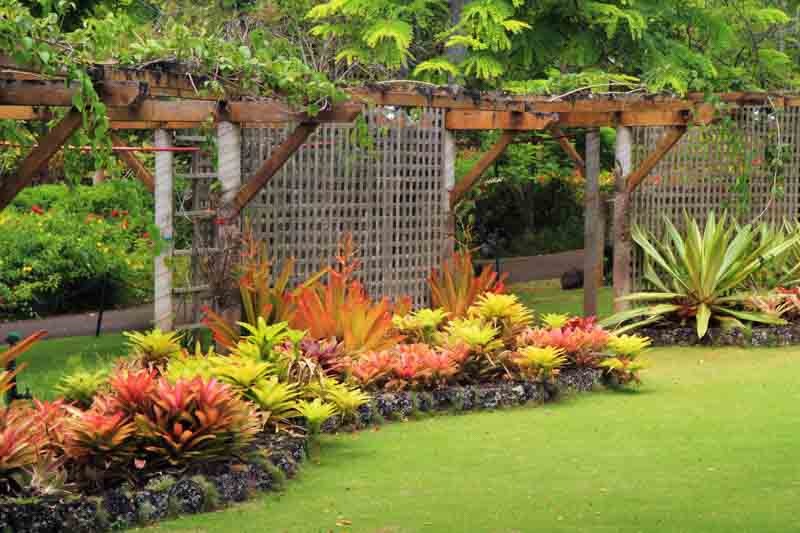
Tropical plants transform outdoor gardens into lush, vibrant sanctuaries, offering an escape into a world of exotic beauty and diversity. These plants, native to the world’s tropical regions, thrive in warm climates and are characterized by their vivid colors, unique shapes, and, often, fragrant blooms. Incorporating tropical plants into an outdoor garden can create a visually striking landscape that feels both inviting and mysterious, reminiscent of a paradise found in nature documentaries or distant travels.
Vibrant Colors and Unique Textures: These plants are known for their vivid blooms and distinctive foliage, adding a splash of color and varied textures to gardens. They can be as stunning as tropical flowers.
Exotic Ambiance: Incorporating tropical plants creates a visually stunning landscape reminiscent of a vacation paradise, enhancing the overall beauty of outdoor spaces.
Increased Biodiversity: Their tropical flowers can attract a variety of wildlife, including butterflies and bees, contributing to a more diverse and healthy ecosystem.
Stress Reduction: The lush and serene environment they create can reduce stress and promote a sense of well-being.
Shade and Cooling: Large-leaved plants can provide shade, reducing temperatures in their immediate vicinity and creating cooler, more comfortable outdoor living areas.
Humidity Regulation: By transpiring water through their leaves, these plants can help increase local humidity levels, making the environment more pleasant in dry climates.
Diverse Design Options: Tropical plants offer a wide range of landscaping possibilities, from creating a dense, jungle-like feel to integrating individual tropical specimens into more temperate gardens for dramatic effect.
Seasonal Dynamism: Many plants have varying blooming seasons, ensuring that gardens remain dynamic and interesting throughout the year.
Popular tropical plants for outdoor gardens include Hibiscus, with its large, colorful blooms; Bird of Paradise (Strelitzia), known for its striking flower shape; Canna Lily, offering vibrant leaves and flowers; Bougainvillea, celebrated for its dazzling cascades of color; Banana Plant (Musa), adding dramatic height with its large leaves; Plumeria, adored for its fragrant flowers; Heliconia, with unique, lobster-claw blooms; Elephant Ear (Colocasia), for its massive, lush leaves. These plants are beloved for transforming spaces into exotic landscapes.
Strelitzia reginae, commonly known as the Bird of Paradise, is a striking plant renowned for its large, vibrant flowers that resemble a bird in flight. Ideal for both indoor and outdoor environments, it thrives in bright, indirect sunlight indoors and enjoys warm, sunny conditions outdoors. This plant adds an exotic, tropical flair to any setting with its bold foliage and stunning blooms.
| Hardiness | 10 - 12 |
|---|---|
| Exposure | Full Sun, Partial Sun |
| Season of Interest |
Spring (Early, Mid, Late) Fall Winter |
| Height |
5' - 6' (150cm - 180cm) |
| Spread |
3' - 4' (90cm - 120cm) |
Plumeria rubra, or Frangipani, is a deciduous shrub or small tree beloved for its succulent branches and spiral-shaped, fragrant flowers with yellow centers, blooming in terminal clusters in tropical areas. Its dark green, leathery leaves may drop in cooler winters, showcasing stubby branches. Ideal for patios or borders, its scented blooms are perfect for leis.
| Hardiness | 10 - 12 |
|---|---|
| Exposure | Full Sun |
| Season of Interest |
Spring (Early, Mid, Late) Summer (Early, Mid, Late) Fall |
| Height |
15' - 25' (4.6m - 7.6m) |
| Spread |
15' - 25' (4.6m - 7.6m) |
Native to Brazil, Ananas comosus var. variegatus, the Variegated Pineapple, boasts a dense rosette of dark green, cream-striped leaves with spiny edges. Summer brings a cone-like cluster of purple and red flowers, merging into a bright red, edible pineapple. Esteemed for its striking foliage and fruit, it’s a popular ornamental and fruiting plant, thriving in tropical and subtropical climates, and ranking high among tropical fruits globally.
| Hardiness | 11 - 12 |
|---|---|
| Exposure | Full Sun |
| Season of Interest |
Spring (Early, Mid, Late) Summer (Early, Mid, Late) Fall Winter |
| Height |
3' - 4' (90cm - 120cm) |
| Spread |
3' - 4' (90cm - 120cm) |
Clivia miniata, known as Natal Lily, is celebrated for its stunning blooms, featuring large clusters of orange-red, funnel-shaped flowers with yellow throats from winter to spring. These long-lasting blossoms rise above dark green, strap-shaped leaves, creating a vibrant display, followed by ornamental red berries. Its lush foliage offers year-round beauty.
| Hardiness | 9 - 11 |
|---|---|
| Exposure | Partial Sun |
| Season of Interest |
Spring (Early, Mid, Late) Summer (Early, Mid, Late) Fall Winter |
| Height |
1' - 2' (30cm - 60cm) |
| Spread |
2' - 3' (60cm - 90cm) |
Plumbago auriculata (Cape Leadwort) is a versatile evergreen, functioning as a vine or mounding shrub. It produces a bounty of sky-blue, trumpet-shaped flowers on racemes, blooming from spring through summer or year-round in frost-free areas. Its slender stems with light green leaves form a shrub-like mass, perfect for trellises, groundcovers, containers, or cascading walls, showcasing its unique blue blooms.
| Hardiness | 8 - 11 |
|---|---|
| Exposure | Full Sun, Partial Sun |
| Season of Interest |
Spring (Early, Mid, Late) Summer (Early, Mid, Late) Fall Winter |
| Height |
6' - 10' (180cm - 3m) |
| Spread |
8' - 10' (240cm - 3m) |
Jasminum officinale (Common Jasmine) is a beloved climbing shrub with a vigorous and graceful habit. It is cherished for its sweet fragrance and bountiful clusters of fragrant flowers. Blooming from late spring to frost, it adorns its twining stems with lush green leaves and brings a delightful scent to the garden.
| Hardiness | 7 - 10 |
|---|---|
| Exposure | Full Sun, Partial Sun |
| Season of Interest |
Spring (Late) Summer (Early, Mid, Late) Fall |
| Height |
15' - 30' (4.6m - 9.1m) |
| Spread |
7' - 15' (210cm - 4.6m) |
Passiflora caerulea (Blue Passion Flower) is a captivating and vigorous climber. Its exquisite white flowers, tinged with pink, feature a mesmerizing array of blue, white, and purple filaments. The plant produces edible but mildly flavored orange fruits. With its lush green foliage and large blooms, this glamorous climber is a showstopper in any garden.
| Hardiness | 6 - 9 |
|---|---|
| Exposure | Full Sun, Partial Sun |
| Season of Interest |
Summer (Early, Mid, Late) Fall |
| Height |
20' - 30' (6.1m - 9.1m) |
| Spread |
3' - 6' (90cm - 180cm) |
Native to Brazil, Aechmea fasciata, or Urn Plant, features a striking rosette of silver and green leaves forming a vase shape. At maturity, it showcases a pink spike with purple flowers and pink bracts, lasting months. Blooming once, it produces offsets for replanting. Thrives indoors with minimal care.
| Hardiness | 10 - 11 |
|---|---|
| Exposure | Partial Sun |
| Season of Interest |
Spring (Early, Mid, Late) Summer (Early, Mid, Late) Fall Winter |
| Height |
1' - 3' (30cm - 90cm) |
| Spread |
1' - 2' (30cm - 60cm) |
Medinilla magnifica, known as the Rose Grape or Magnificent Medinilla, dazzles with its cascading pink flower clusters and glossy green leaves. Native to the Philippines, this tropical evergreen shrub thrives in humid, indirect light environments, making it a stunning indoor plant. It requires moist, well-drained soil and careful watering to bloom.
| Hardiness | 10 - 11 |
|---|---|
| Exposure | Partial Sun |
| Season of Interest |
Spring (Early, Mid, Late) Summer (Early, Mid, Late) Fall Winter |
| Height |
2' - 4' (60cm - 120cm) |
| Spread |
1' - 3' (30cm - 90cm) |
Protea cynaroides, the King Protea, South Africa’s national bloom, is known for its large, bowl-shaped flower heads and colorful bracts in hues from greenish-white to pink and red. Thriving in warm climates, it blooms primarily in warmer months, with a single plant producing 6-10, sometimes up to 40, flower heads a season. Perfect for sunny gardens or containers, it’s a favored cut flower worldwide.
| Hardiness | 9 - 12 |
|---|---|
| Exposure | Full Sun |
| Season of Interest |
Spring (Early, Mid, Late) Summer (Early, Mid, Late) Fall Winter |
| Height |
3' - 4' (90cm - 120cm) |
| Spread |
3' - 4' (90cm - 120cm) |
Etlingera elatior, known as Torch Ginger, showcases tall, lush green foliage and vibrant red or pink flower spikes resembling flaming torches. Thriving in tropical climates, it’s celebrated for its striking appearance and edible buds, adding an exotic touch to gardens and culinary dishes with its architectural beauty and unique flavors.
| Hardiness | 10 - 12 |
|---|---|
| Exposure | Full Sun, Partial Sun |
| Season of Interest |
Spring (Early, Mid, Late) Summer (Early, Mid, Late) Fall Winter |
| Height |
6' - 15' (180cm - 4.6m) |
| Spread |
4' - 10' (120cm - 3m) |
Ipomoea alba, or Moonflower, captivates with its nocturnal blooms, opening at dusk to release a sweet fragrance. These large, white flowers close at dawn, set against a backdrop of heart-shaped leaves. A fast-growing vine, it’s ideal for covering fences or adorning structures, thriving as a perennial in warm climates or an annual in cooler areas.
| Hardiness | 9 - 12 |
|---|---|
| Exposure | Full Sun |
| Season of Interest |
Summer (Mid, Late) Fall |
| Height |
10' - 15' (3m - 4.6m) |
| Spread |
3' - 6' (90cm - 180cm) |
Acalypha hispida, or Chenille Plant, dazzles with unique, long tassel-like bright red to pink flowers, blooming year-round. Its large, medium green leaves complement the free-flowering racemes. Ideal for tropical settings as an accent or hedge, this vigorous shrub also suits containers, making it versatile indoors and out.
| Hardiness | 10 - 11 |
|---|---|
| Exposure | Full Sun, Partial Sun |
| Season of Interest |
Spring (Early, Mid, Late) Summer (Early, Mid, Late) Fall Winter |
| Height |
4' - 6' (120cm - 180cm) |
| Spread |
6' - 8' (180cm - 240cm) |
Alpinia zerumbet, known as Shell Ginger, is a tropical perennial with dark green, lance-shaped leaves that emit a ginger scent when crushed. In summer, it blooms with waxy, fragrant flowers in clusters, adding beauty to tropical gardens, containers, or as a houseplant. Valued for spice, food, medicine, and ornamental use, it thrives in most tropical regions, offering a dense foliage display perfect for mass planting.
| Hardiness | 8 - 11 |
|---|---|
| Exposure | Full Sun, Partial Sun |
| Season of Interest |
Spring (Early, Mid, Late) Summer (Early, Mid, Late) Fall Winter |
| Height |
3' - 10' (90cm - 3m) |
| Spread |
2' - 4' (60cm - 120cm) |
Hedychium coronarium, or White Ginger Lily, an award-winner for its rich fragrance, is a perennial with dense spikes of fragrant, white flowers resembling butterflies, blooming in late summer to early fall. Each blossom lasts a day, contributing to a 6-week display above lance-shaped leaves. Ideal for tropical-themed patios and containers.
| Hardiness | 7 - 11 |
|---|---|
| Exposure | Full Sun, Partial Sun |
| Season of Interest |
Summer (Late) Fall |
| Height |
3' - 6' (90cm - 180cm) |
| Spread |
2' - 3' (60cm - 90cm) |
Hedychium gardnerianum, or Kahili Ginger, is an award-winning perennial with striking lemon-yellow flowers and long red stamens on cylindrical spikes, blooming late summer to early fall. Its gray-green, lance-shaped leaves add drama even without blooms, perfect for tropical-themed patios. Hardy and architectural, it adds an exotic touch to gardens and containers.
| Hardiness | 8 - 10 |
|---|---|
| Exposure | Full Sun, Partial Sun |
| Season of Interest |
Summer (Late) Fall |
| Height |
5' - 6' (150cm - 180cm) |
| Spread |
2' - 3' (60cm - 90cm) |
Hedychium flavescens, or Yellow Ginger Lily, features clusters of spicily-scented, pale to lemon yellow flowers in late summer and fall. Its fragrant blossoms, atop stems with pointed, softly hairy leaves, enhance any tropical-themed patio or deck. This upright perennial adds luminous beauty even when not in bloom.
| Hardiness | 9 - 11 |
|---|---|
| Exposure | Full Sun, Partial Sun |
| Season of Interest |
Summer (Late) Fall |
| Height |
3' - 6' (90cm - 180cm) |
| Spread |
2' - 3' (60cm - 90cm) |
Cordyline fruticosa, or Ti Plant, is cherished as a houseplant for its vividly colored leaves ranging from pink to burgundy, green, and cream. Spirally arranged into a fan shape, these leaves, alongside summer blooms and red berries, add tropical flair. Beloved in Hawaiian culture for luck and culinary use, it thrives in warm, humid settings.
| Hardiness | 10 - 12 |
|---|---|
| Exposure | Full Sun, Partial Sun |
| Season of Interest |
Spring (Early, Mid, Late) Summer (Early, Mid, Late) Fall Winter |
| Height |
9' - 15' (270cm - 4.6m) |
| Spread |
3' - 8' (90cm - 240cm) |
Gardenia jasminoides (Cape Jasmine) is a large evergreen shrub with thick, lustrous, lance-shaped, dark green leaves and extremely fragrant, white flowers, 3 in. across (8 cm). Blooming throughout the year in warm climates, where temperatures do not drop below 60°F (15°C), this award-winning Gardenia blooms in late spring to early summer in cooler climates.
| Hardiness | 8 - 11 |
|---|---|
| Exposure | Full Sun, Partial Sun |
| Season of Interest |
Spring (Early, Mid, Late) Summer (Early, Mid, Late) Fall Winter |
| Height |
3' - 6' (90cm - 180cm) |
| Spread |
3' - 6' (90cm - 180cm) |
Musa basjoo, or Japanese Banana, an award-winning architectural marvel, grows quickly, featuring massive, arching leaves up to 10 ft. long. Summer may bring large, cream-to-yellow flowers, followed by inedible fruit on mature plants. Its foliage creates an exotic splash in gardens and containers, with new shoots continually replacing the flowering pseudostems.
| Hardiness | 5 - 11 |
|---|---|
| Exposure | Full Sun |
| Season of Interest |
Spring (Early, Mid, Late) Summer (Early, Mid, Late) Fall Winter |
| Height |
10' - 15' (3m - 4.6m) |
| Spread |
6' - 8' (180cm - 240cm) |
Sansevieria trifasciata var. laurentii, or Variegated Snake Plant, is prized for its ease of care and striking, upright leaves edged in yellow. Thriving in low light, it purifies indoor air and prefers shade outdoors. Ideal for both indoor and outdoor settings, it demands minimal care, making it a perfect choice for enhancing any space with its vibrant foliage.
| Hardiness | 10 - 12 |
|---|---|
| Exposure | Full Sun, Partial Sun |
| Season of Interest |
Spring (Early, Mid, Late) Summer (Early, Mid, Late) Fall Winter |
| Height |
2' - 4' (60cm - 120cm) |
| Spread |
1' - 2' (30cm - 60cm) |
Mandevilla splendens (Shining Mandevilla) is a woody-stemmed, twining tropical vine boasting sprays of 3-5 large, rose-pink, funnel-shaped flowers, up to 4 in. across (10 cm), with yellow throats. Blooming from late spring to early summer, the blossoms stand out against the foliage of evergreen, oval, lustrous dark green leaves, 4 in. long (10 cm). A favorite of many gardeners for fences, walls, and trellises.
| Hardiness | 10 - 11 |
|---|---|
| Exposure | Full Sun, Partial Sun |
| Season of Interest |
Spring (Late) Summer (Early) |
| Height |
10' - 15' (3m - 4.6m) |
| Spread |
3' - 5' (90cm - 150cm) |
Heliconia psittacorum, or Parrot Heliconia, is an evergreen perennial with dense, bright green leaves and distinctive colorful inflorescences in hues of red, orange, yellow, and green. Blooming year-round, its nectar-rich flowers attract hummingbirds, and its waxy bracts make striking arrangements. Thriving in tropical gardens, it produces long-lasting blooms and dark blue fruits.
| Hardiness | 10 - 11 |
|---|---|
| Exposure | Full Sun, Partial Sun |
| Season of Interest |
Spring (Early, Mid, Late) Summer (Early, Mid, Late) Fall Winter |
| Height |
3' - 6' (90cm - 180cm) |
| Spread |
2' - 3' (60cm - 90cm) |
Heliconia rostrata, known as Hanging Lobster Claw, is an ornamental, evergreen perennial with large, banana-like leaves and striking flower clusters that hang from its stems in spring and summer. Bright red bracts tipped with yellow and green encase yellowish-white flowers, attracting hummingbirds and producing dark blue fruits. Ideal for tropical gardens, these long-lasting blossoms are perfect for arrangements.
| Hardiness | 10 - 11 |
|---|---|
| Exposure | Full Sun, Partial Sun |
| Season of Interest |
Spring (Early, Mid, Late) Summer (Early, Mid, Late) Fall Winter |
| Height |
4' - 6' (120cm - 180cm) |
| Spread |
3' - 6' (90cm - 180cm) |
Mandevilla boliviensis (White Dipladenia) is a woody-stemmed, twining tropical vine with sprays of 3-7 large, white, funnel-shaped flowers, up to 3 in. across (8 cm), with orange-yellow throats. Blooming periodically in summer, the blossoms contrast against the foliage of elliptic, shiny dark green leaves, 4 in. long (10 cm). A favorite of many gardeners.
| Hardiness | 10 - 11 |
|---|---|
| Exposure | Full Sun, Partial Sun |
| Season of Interest |
Spring (Late) Summer (Early, Mid, Late) |
| Height |
3' - 10' (90cm - 3m) |
| Spread |
3' - 6' (90cm - 180cm) |
Trachycarpus fortunei (Chinese Windmill Palm) is an evergreen palm forming a small tree with a terminal tuft of deeply divided, fan-shaped, dark green leaves, up to 3 ft. wide (1 m). They rise atop a stout trunk that is densely covered with hairy black fibers from old leaf sheaths. Wind, drought, and salt tolerant, Trachycarpus fortunei is quite cold-hardy and can survive short periods at 5ºF (-15ºC).
| Hardiness | 7 - 11 |
|---|---|
| Exposure | Full Sun, Partial Sun |
| Season of Interest |
Spring (Early, Mid, Late) Summer (Early, Mid, Late) Fall Winter |
| Height |
8' - 10' (240cm - 3m) |
| Spread |
4' - 6' (120cm - 180cm) |
One of the hardiest palms, Sabal minor (Dwarf Palmetto) is a small evergreen palm, usually trunkless but sometimes with a short trunk. At the tips of long smooth unarmed petioles are 4-10 huge, fan-shaped leaves that can reach 3 ft. in diameter (90 cm). Salt and drought tolerant, Dwarf Palmetto is also hardy to 10°F (-12°C) with no leaf damage.
| Hardiness | 7 - 10 |
|---|---|
| Exposure | Full Sun, Partial Sun |
| Season of Interest |
Spring (Early, Mid, Late) Summer (Early, Mid, Late) Fall Winter |
| Height |
4' - 6' (120cm - 180cm) |
| Spread |
4' - 6' (120cm - 180cm) |
Hypoestes Phyllostachya, commonly called the Polka Dot Plant, is a beloved plant for indoor and outdoor settings. Its foliage is adorned with charming tiny spots in contrasting colors, providing a captivating display. With shades of pink, white, and red, it thrives in bright, indirect light and high humidity levels, bringing vibrancy and playfulness to any space.
| Hardiness | 10 - 11 |
|---|---|
| Exposure | Partial Sun |
| Season of Interest |
Spring (Early, Mid, Late) Summer (Early, Mid, Late) Fall Winter |
| Height |
1' - 3' (30cm - 90cm) |
| Spread |
1' - 2' (30cm - 60cm) |
Persea americana, commonly known as the avocado tree, is a tropical evergreen from Central America, revered for its nutritious fruit. It features broad, dense foliage and small, greenish flowers. Avocado trees prefer warm climates (USDA zones 9-11), require well-draining soil, and offer numerous health benefits through their rich, creamy fruits.
| Hardiness | 8 - 11 |
|---|---|
| Exposure | Full Sun |
| Season of Interest |
Spring (Early, Mid, Late) Summer (Early, Mid, Late) Fall Winter |
| Height |
30' - 60' (9.1m - 18.3m) |
| Spread |
20' - 30' (6.1m - 9.1m) |
Cuphea ignea (Cigar Flower) is an evergreen sub-shrub renowned for its abundant, cigar-shaped, reddish-orange flowers with black tips and white edges. Blooming from late spring to frost, it’s a magnet for hummingbirds and pollinators. With a dense, bushy habit and dark green leaves, it’s easy to grow and disease-resistant, making a striking addition to sunny beds and containers. Its continuous summer bloom has quickly made this tropical beauty a garden favorite.
| Hardiness | 10 - 12 |
|---|---|
| Exposure | Full Sun, Partial Sun |
| Season of Interest |
Spring (Late) Summer (Early, Mid, Late) Fall |
| Height |
1' - 3' (30cm - 90cm) |
| Spread |
1' - 3' (30cm - 90cm) |
Serenoa repens, known as Saw Palmetto, is a robust, slow-growing palm characterized by its clumping form and multi-trunked, creeping stems. Its fan-shaped, evergreen leaves, armed with sharp spines, display a range of colors from silvery-white to blue-green. Fragrant, creamy-white flowers bloom in late spring, leading to small, fleshy berries that serve as crucial wildlife nourishment. Native to the southeastern US, this palm thrives in various habitats, offering ornamental appeal, erosion control, and fire resilience in landscapes.
| Hardiness | 8 - 11 |
|---|---|
| Exposure | Full Sun, Partial Sun, Shade |
| Season of Interest |
Spring (Early, Mid, Late) Summer (Early, Mid, Late) Fall Winter |
| Height |
5' - 10' (150cm - 3m) |
| Spread |
4' - 10' (120cm - 3m) |
One of the most flamboyant flowering shrubs, Tropical Hibiscus add color and excitement to landscapes, patios and decks. Cultivated for centuries, Tropical Hibiscus flourish in sub-tropical climates and adapt well to container-growing in cooler areas.
| Hardiness | 10 - 12 |
|---|---|
| Exposure | Full Sun, Partial Sun |
| Season of Interest |
Spring (Early, Mid, Late) Summer (Early, Mid, Late) Fall Winter |
Bougainvillea is a vibrant, evergreen climbing shrub adorned with colorful bracts surrounding small, tubular flowers. Its fast-growing, low-maintenance nature makes it an eye-catching addition to gardens and landscapes.
| Hardiness | 9 - 11 |
|---|---|
| Exposure | Full Sun |
| Season of Interest |
Spring (Early, Mid, Late) Summer (Early, Mid, Late) Fall Winter |
| Height |
2' - 40' (60cm - 12.2m) |
| Spread |
6' - 20' (180cm - 6.1m) |
Brugmansia, also known as Angel’s Trumpets, are highly valued for their tropical appearance and striking trumpet-shaped blossoms. These evergreen shrubs or small trees offer both beauty and fragrance, with their powerful scent released primarily in the evenings. Long-lived and decorative, they bring dramatic flair to gardens and containers with relative ease.
| Hardiness | 9 - 11 |
|---|---|
| Exposure | Full Sun, Partial Sun |
| Season of Interest |
Summer (Mid, Late) Fall |
Canna, also known as Canna lily or Indian shot, is a tropical perennial plant appreciated for its vibrant flowers and striking foliage. With large paddle-shaped leaves and showy blooms in a range of colors including red, orange, yellow, and pink, they add a bold and tropical element to gardens. They thrive in warm climates and can be grown in containers or as bedding plants.
| Hardiness | 8 - 11 |
|---|---|
| Exposure | Full Sun |
| Season of Interest |
Summer (Early, Mid, Late) Fall |
| Height |
2' - 8' (60cm - 240cm) |
| Spread |
1' - 3' (30cm - 90cm) |
Pentas burst into a kaleidoscope of starry blooms, creating a buzz in gardens with their vivid colors. These sun-loving beauties are a magnet for fluttering butterflies and darting hummingbirds, offering a lively display from spring through autumn and adding an effervescent charm to any outdoor space.
| Hardiness | 10 - 11 |
|---|---|
| Exposure | Full Sun, Partial Sun |
| Season of Interest |
Spring (Early, Mid, Late) Summer (Early, Mid, Late) Fall Winter |
| Height |
1' - 3' (30cm - 90cm) |
| Spread |
1' - 3' (30cm - 90cm) |
Colocasia, known as Elephant Ear or Taro, boasts dramatic, heart-shaped leaves, creating a lush, tropical ambiance. Thriving in moist environments, this fast-growing ornamental plant is celebrated for its striking foliage, ranging from deep green to black. While grown mainly for its foliage, Colocasia is also an important agricultural crop in many cultures, valued for its edible tubers.
| Hardiness | 8 - 11 |
|---|---|
| Exposure | Full Sun, Partial Sun |
| Season of Interest |
Spring (Early, Mid, Late) Summer (Early, Mid, Late) Fall Winter |
| Height |
2' - 10' (60cm - 3m) |
| Spread |
2' - 10' (60cm - 3m) |
Coleus is a vibrant, eye-catching plant known for its stunning, colorful foliage that comes in a wide array of patterns and hues. It is typically grown as an annual but can be a tender perennial in warmer climates. Coleus is low-maintenance, versatile, and thrives in a range of light conditions, making it a popular choice for adding visual interest to gardens, containers, and indoor settings.
| Hardiness | 10 - 11 |
|---|---|
| Exposure | Partial Sun, Shade |
| Season of Interest |
Spring (Late) Summer (Early, Mid, Late) Fall |
| Height |
1' - 3' (30cm - 90cm) |
| Spread |
1' - 3' (30cm - 90cm) |
Caladium is a tropical plant known for its vibrant and colorful foliage. With large heart-shaped leaves in shades of green, pink, red, and white, it adds a striking visual appeal to gardens and indoor spaces. Caladiums thrive in shaded areas and require well-drained soil to flourish. They are popular choices for adding a splash of tropical beauty to any setting.
| Hardiness | 9 - 12 |
|---|---|
| Exposure | Partial Sun, Shade |
| Season of Interest |
Spring (Early, Mid, Late) Summer (Early, Mid, Late) Fall Winter |
| Height |
1' - 3' (30cm - 90cm) |
| Spread |
1' - 2' (30cm - 60cm) |
Begonia plants are popular flowering plants with over 2,000 species and countless hybrids. They are native to subtropical and tropical regions and are used as ornamental plants both indoors and outdoors. Begonias are prized for their vibrant flowers, which come in a range of colors and sizes, as well as their attractive foliage.
| Hardiness | 7 - 11 |
|---|---|
| Exposure | Partial Sun |
| Season of Interest |
Spring (Late) Summer (Early, Mid, Late) Fall |
| Height |
6" - 3' (15cm - 90cm) |
| Spread |
6" - 1' (15cm - 30cm) |
Growing and caring for tropical plants outdoors can bring the vibrancy and lushness of the tropics to your garden.
Bougainvillea thrives in full sun, showcasing its vibrant, papery blooms in a range of colors. It’s well-suited to warm climates and can tolerate drought conditions once established, making it an excellent choice for sunny, tropical-themed gardens.
Yes, many tropical plants can survive outside in the right conditions. They typically require warm temperatures, high humidity, and protection from frost. In regions with cooler climates, tropical plants can be grown outdoors during warmer months and then moved indoors or provided with protection when temperatures drop.
Spider Plant (Chlorophytum comosum) is one of the easiest tropical plants to care for. Though often grown indoors, it can thrive outdoors in warm climates. It’s adaptable to various light conditions, requires minimal maintenance, and readily produces offsets (baby plants) that can be replanted or left to hang decoratively.
Windmill Palm (Trachycarpus fortunei) is a cold-hardy tropical plant that can withstand temperatures down to 0°F (-18°C). Its tolerance to cold, combined with its distinctive, fan-shaped foliage and ability to grow in a range of soil types, makes it a popular choice for adding a tropical flair to more temperate gardens.
Tropical flowers, celebrated for their vivid colors and unique shapes, thrive in warm, humid climates. Examples like hibiscus, orchids, and bird of paradise embody the lushness of the tropics. These flowers, often fragrant, attract pollinators and admirers alike, adding exotic beauty to gardens, pots and floral arrangements worldwide.
Small trees and shrubs that bloom in winter offer a rare and enchanting spectacle, defying the dormant season with their vibrant blossoms. These resilient species illuminate the garden with their colorful flowers, providing unexpected joy and a feast for the senses during the coldest months, while offering crucial sustenance to local wildlife.
Small trees and shrubs, particularly those that bear fruits or berries, play a pivotal role in attracting a variety of birds, including American Robins, Bluebirds, Mockingbirds, Blue Jays, Goldfinches, House Finches, and Northern Cardinals. These plants offer birds nourishment through their fruits and seeds, and provide shelter and nesting sites, enhancing biodiversity in gardens and wild areas.
As the warmth of summer fades and leaves begin to turn, certain small trees and shrubs grace the autumn landscape with their blossoms. These botanical marvels, including witch hazel, beautyberry, camellia and rose of sharon, bring bursts of color and vibrancy, enriching the fall scenery and delighting garden enthusiasts with their late-season blooms.
Enhance your garden’s privacy and allure year-round with evergreen trees. Arborvitae, Leyland Cypress, Holly, and Fir stand out for their dense foliage, offering a living barrier that thrives through all seasons. These steadfast greens provide not just seclusion but also enduring beauty, making any outdoor space a tranquil retreat.
Opt for small trees to transform tiny gardens into lush havens. Choose from varieties like Japanese Maple for fiery fall colors, Crabapple for spring blossoms, or Witch Hazel for winter blooms. These compact trees offer year-round beauty, from vibrant foliage to unique forms, making every small space a botanical delight.
Flowering trees, with their breathtaking blooms, are essential for any garden seeking vibrancy and allure. Choices range from the majestic Magnolia to the graceful Dogwood, vibrant Crepe Myrtle, or stunning Jacaranda, each offering unique colors, scents, and textures. These natural beauties provide not just aesthetic appeal but also support local ecosystems and wildlife.
Blue flowers, symbolizing serenity and tranquility, add a unique and soothing touch to any garden. From the vibrant azure of delphiniums to the subtle hues of bluebells, these blooms create a cooling effect, contrasting beautifully with warmer colors. They attract pollinators and add a rare and enchanting element to landscapes.
Pink flowers can bring a pop of color and a sense of joy to any garden or floral arrangement. From delicate pastel hues to bright and bold shades, there are a variety of pink flowers to choose from, such as roses, peonies, and carnations.
Purple flowers are some of the most captivating and attractive flowers in the world. They add beauty and a touch of elegance to any garden or floral arrangement. They are available in a wide range of shades and hues, ranging from light lilacs to deep purples. These flowers can also come in various sizes, shapes, and textures.
Incorporating white flowers in gardens introduces a touch of timeless elegance and tranquility. From the serene glow of lilies and peonies to the delicate charm of baby’s breath and jasmine, these blooms create a soothing ambiance, beautifully contrasting with green foliage and enhancing the garden’s peacefulness under moonlit skies.
For stunning fall color, consider planting Sugar Maples for vibrant oranges and reds, Birch trees for bright yellows, and Red Oaks for deep red hues. Dogwoods offer a mix of purples and reds, while Ginkgoes light up landscapes with bold yellows, creating a breathtaking autumn display in any garden.
Planting an oak tree offers numerous benefits: it provides a vital habitat and food source for wildlife, significantly sequesters carbon to combat climate change, improves air quality by filtering pollutants, enriches soil health through its leaf litter, and aids in water conservation with its extensive root system.
Dogwood trees and shrubs offer a diverse array of choices for gardeners. Popular varieties include the flowering dogwood (Cornus florida) with its iconic white or pink blooms, the kousa dogwood (Cornus kousa) known for its late-spring flowering, and the red-twig dogwood (Cornus sericea) prized for its vibrant red branches in winter.
Ideal for container gardening, select shrubs like compact evergreens, dwarf flowering varieties, and hardy herbs offer year-round appeal and versatility. Adaptable to limited space, these shrubs provide a lush, vibrant display on patios, balconies, and terraces, enhancing outdoor living areas with minimal maintenance and maximum beauty.
Crafting an enchanting hedge in your garden is a rewarding endeavor. Hedges serve as living boundaries, offering privacy, beauty, and structure. Explore a world of possibilities with various shrubs, each contributing its unique charm to create the hedge that suits your landscape vision.
Small evergreen shrubs are the unsung heroes of landscaping, providing year-round beauty without the hassle. Boxwood, lavender, and other varieties offer enduring charm, require minimal maintenance, and thrive effortlessly in your garden, making them the perfect choice for a vibrant, low-maintenance landscape.
Discover the perfect flowering shrubs for small gardens. These compact beauties offer vibrant blooms, lush foliage, and space-saving charm, enhancing your small garden’s allure without overwhelming it.
Enhance your garden with flowering shrubs that love the sun! These vibrant, sun-loving plants bring color, fragrance, and life, even in the brightest spots. Ideal for creating dynamic landscapes, they offer varied blooms and sizes, perfect for any garden seeking a burst of color and natural beauty.



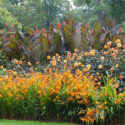

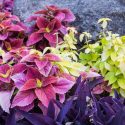
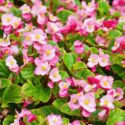


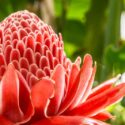
Create a membership account to save your garden designs and to view them on any device.
Becoming a contributing member of Gardenia is easy and can be done in just a few minutes. If you provide us with your name, email address and the payment of a modest $25 annual membership fee, you will become a full member, enabling you to design and save up to 25 of your garden design ideas.
Join now and start creating your dream garden!
Create a membership account to save your garden designs and to view them on any device.
Becoming a contributing member of Gardenia is easy and can be done in just a few minutes. If you provide us with your name, email address and the payment of a modest $25 annual membership fee, you will become a full member, enabling you to design and save up to 25 of your garden design ideas.
Join now and start creating your dream garden!